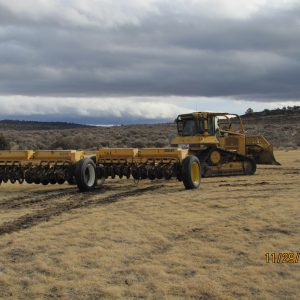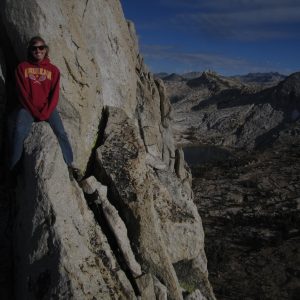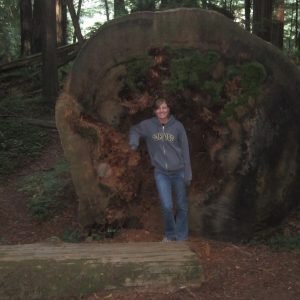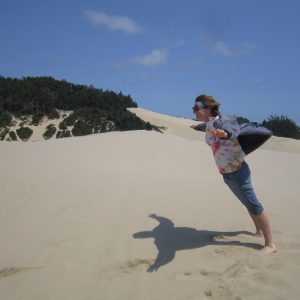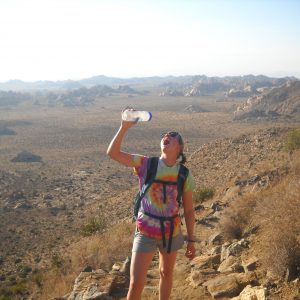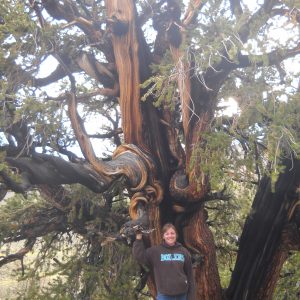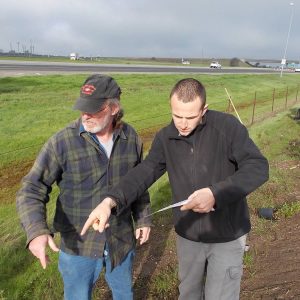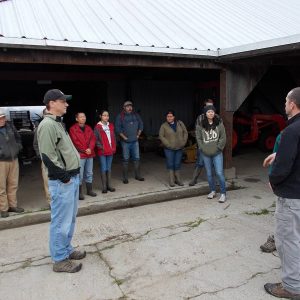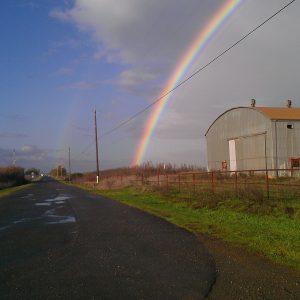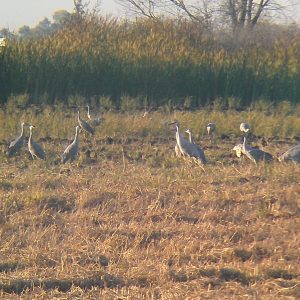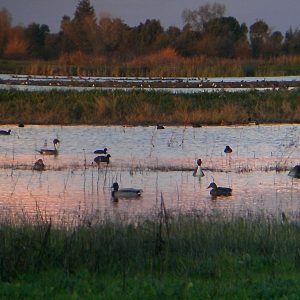After spending six months in Susanville without any real rain event, the weather that November and December brought was startling. It rained for multiple days in a row with few breaks in the clouds. Although I was not too fond of the many wet and dreary days, I am relieved that the land is finally getting a bit of moisture. The plants’ dismal seed production this year showed that they were more than a little parched. All the precipitation has also created great conditions to apply stabilization and rehabilitation treatments to the 315,000 acre Rush wildfire that raged through the Eagle Lake BLM field office this past summer.
The process of drill seeding the severely burned areas has begun. The rangeland drill seeder is a beast of a machine and I think everyone in our field office is pleasantly surprised by its capabilities. Our land is unreasonably rocky, making any of the treatments we are trying to apply extremely difficult to achieve. Luckily, the drill seeder can handle the rocks and great progress is being made on that front.
We have also started planting antelope bitterbrush (Purshia tridentata) in the burned area. Bitterbrush is an important plant used for cover and forage by deer, antelope, and other wildlife species, and much of this habitat was burned in the Rush Fire. Finding rock free sites with deep soils to plant bitterbrush seedlings is challenging, however. Site conditions need to be just perfect for efficient and successful bitterbrush seedling planting, as the chainsaw auger used to drill deep holes for the seedlings does not agree with rocks and shallow soils. With the help of volunteers, we have managed to plant about 2000 bitterbrush seedlings before the snow came and the ground froze.
As the year 2012 comes to a close, I’ve been reflecting back on my experiences throughout the past year, and I couldn’t be more thrilled with how it turned out. My first trip out West has been thanks to the CLM internship, and I have seen and done so much because of the awesome opportunity. I have explored an astonishing nine National Parks in the short time I have lived in California, as well as visited several amazing cities. I wasn’t anticipating being in Susanville for more than five months, but here I am seven months later, and just starting my extension. There is still so much to explore and I can’t wait to see what the year 2013 holds!
- The Rangeland Drill Seeder
- Sitting on Cathedral Peak in Yosemite
- Downed redwood tree at Prairie Creek Redwood State Park
- Oredon Dunes
- Parched at Joshua Tree
- Ancient Bristlecone Pine Forest

